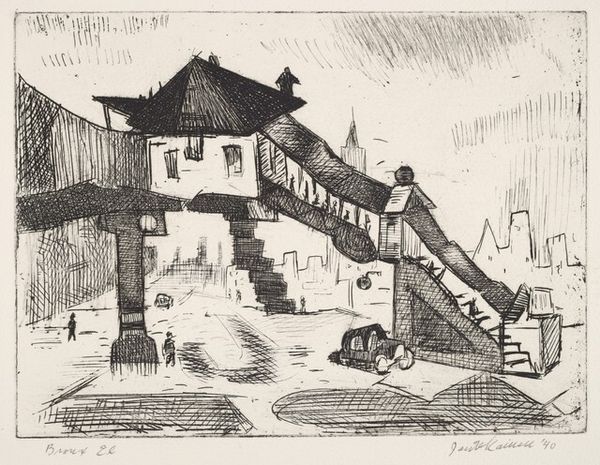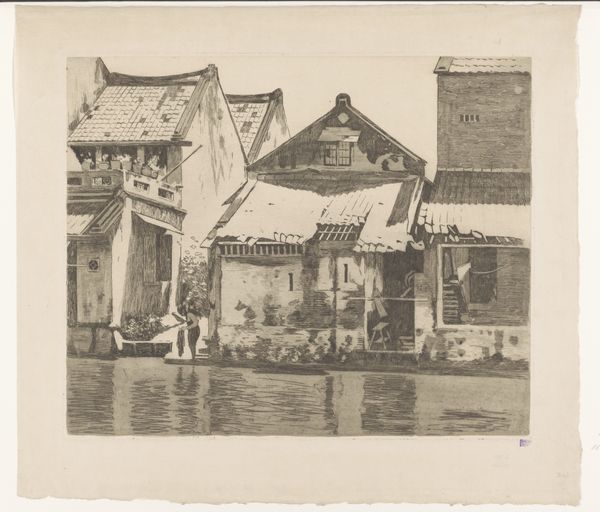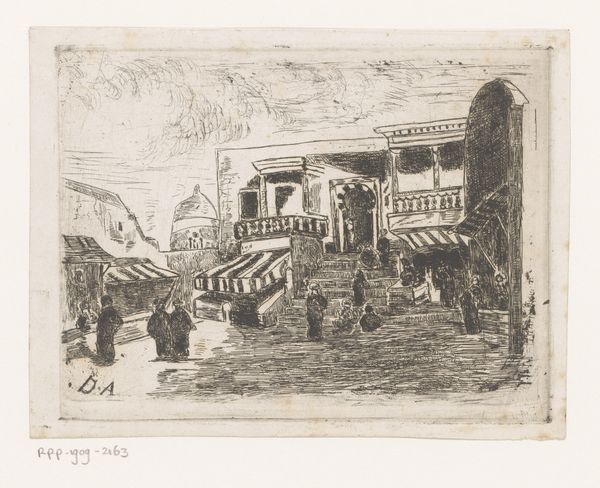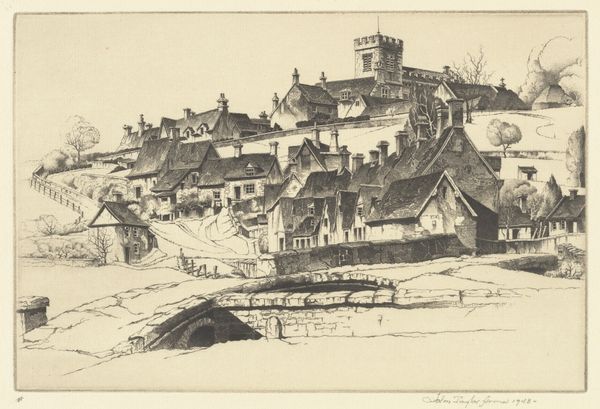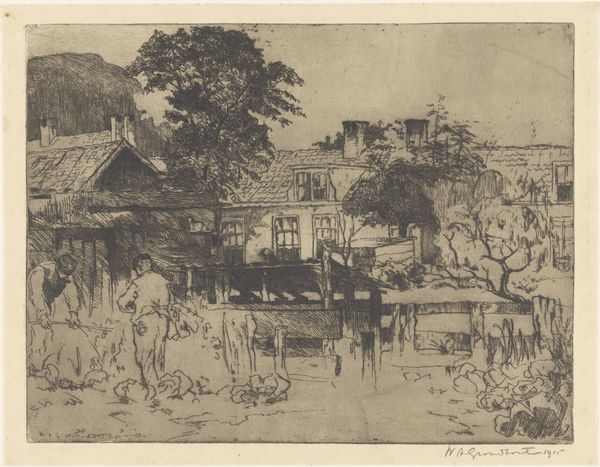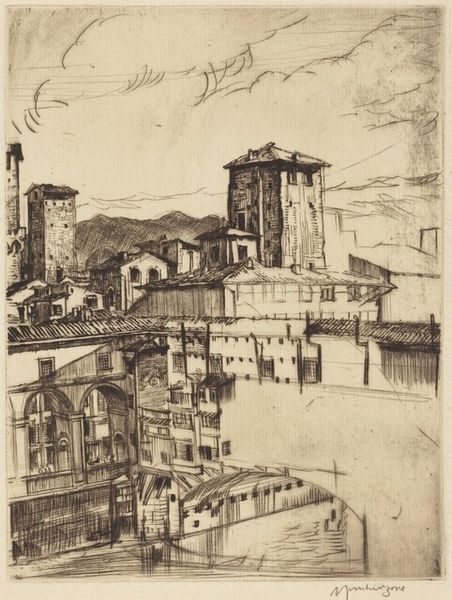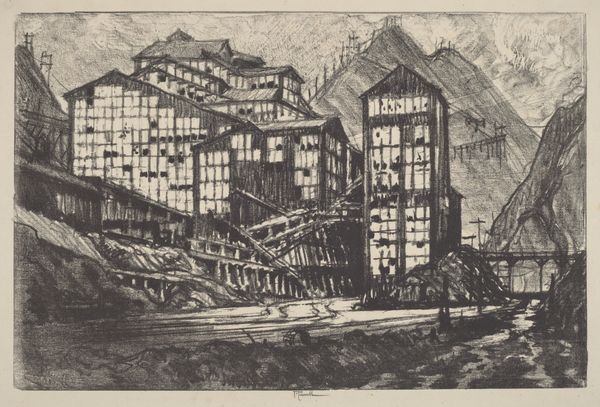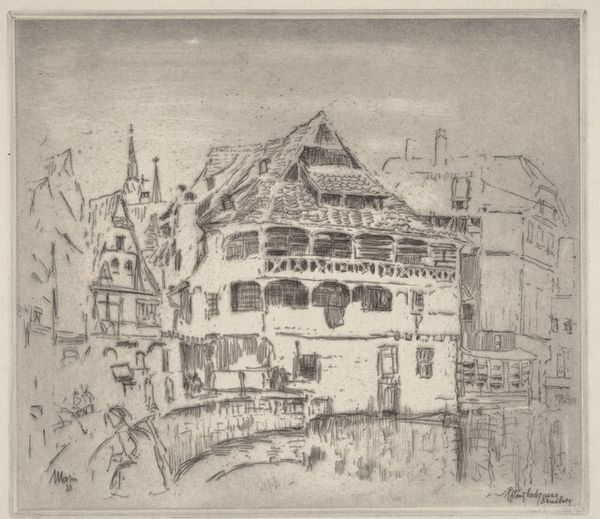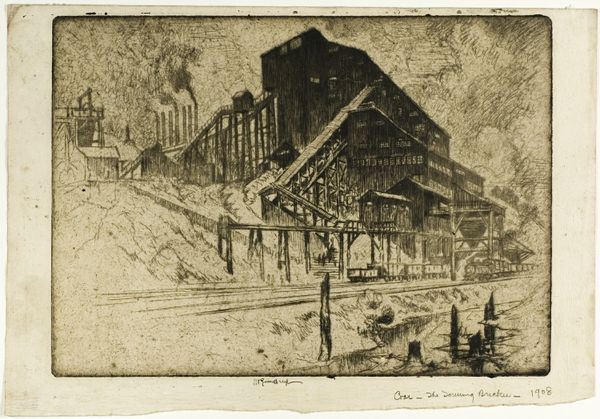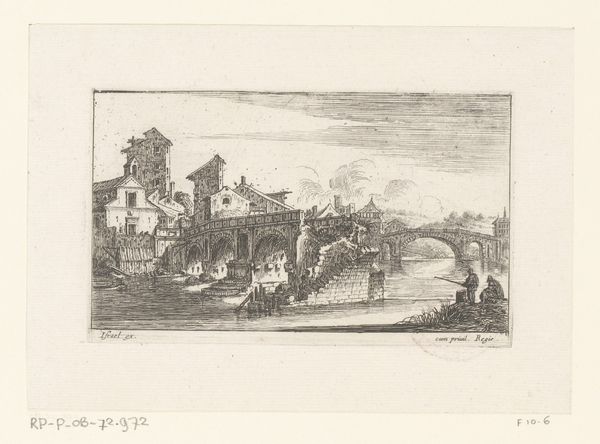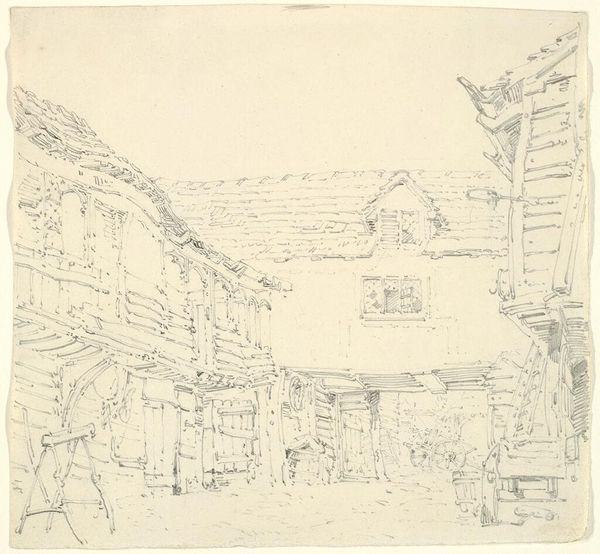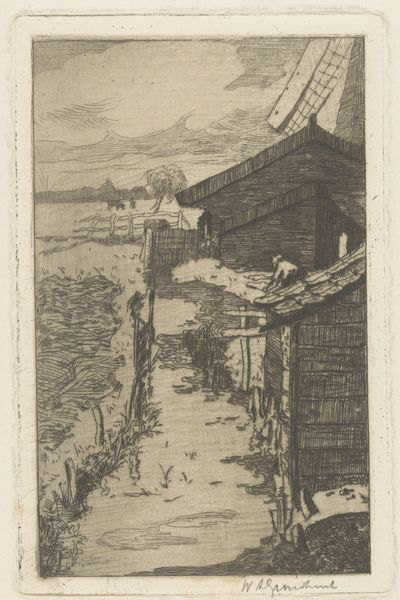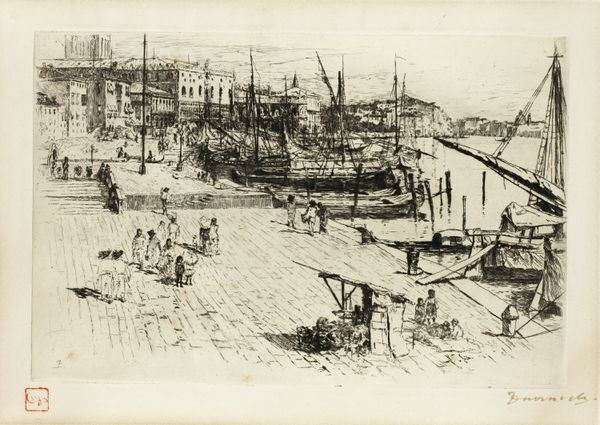
drawing, print, etching, paper
#
drawing
# print
#
etching
#
arts-&-crafts-movement
#
landscape
#
paper
#
cityscape
Dimensions: 200 × 217 mm (image/plate); 204 × 220 mm (sheet)
Copyright: Public Domain
Curator: Looking at Donald Shaw MacLaughlan's etching from 1908, "Houses on the Aare, Switzerland," the detail is immediately captivating. The intricate lines describing the architecture are quite impressive. Editor: It feels both monumental and transient. I’m immediately struck by the artist’s process – imagine the physical act of repeatedly applying acid to the metal plate to achieve this layered texture. The social aspect seems vital. Curator: Note how MacLaughlan meticulously builds space through carefully placed lines. The sharp angularity of the rooftops contrasted with the delicate rendering of the distant hills establishes depth and reinforces the overall composition. Semiotically, the verticality emphasizes the grounded solidity of the village, which offers an image of permanence. Editor: And the Aare river rushing beneath these imposing structures adds an interesting dynamic, no? Considering the materials, we must remember the socio-economic context – etching made art more accessible. The labour, the chemicals, and then the proliferation of the image. Did it reach a wide audience, or mostly circulate within a bourgeois milieu? The choice to focus on vernacular architecture speaks volumes. Curator: True, and observe the artist's control over light and shadow—essential compositional components here—achieved via controlled tonal gradations to sculpt the buildings’ facades. We may interpret these contrasting chiaroscuro effects as a conscious endeavor by the artist to investigate spatial dimensions. Editor: But also, beyond spatial investigations, that is, from the building’s construction material, its function, down to the individual inhabitant’s livelihoods? MacLaughlan depicts a built environment intrinsically linked to work, leisure and a complex web of relations. In focusing on it he gives validity to their presence. Curator: Interesting interpretation. Considering our framework then, MacLaughlan does use this picturesque view to underscore the importance of spatial relationships in conveying the aesthetic significance of this particular location. Editor: Absolutely. Seeing it with this in mind, I also wonder, what was his motivation in creating it, beyond merely aesthetic exploration? Its endurance poses more than compositional concerns; its message becomes a lasting narrative beyond formalism.
Comments
No comments
Be the first to comment and join the conversation on the ultimate creative platform.
